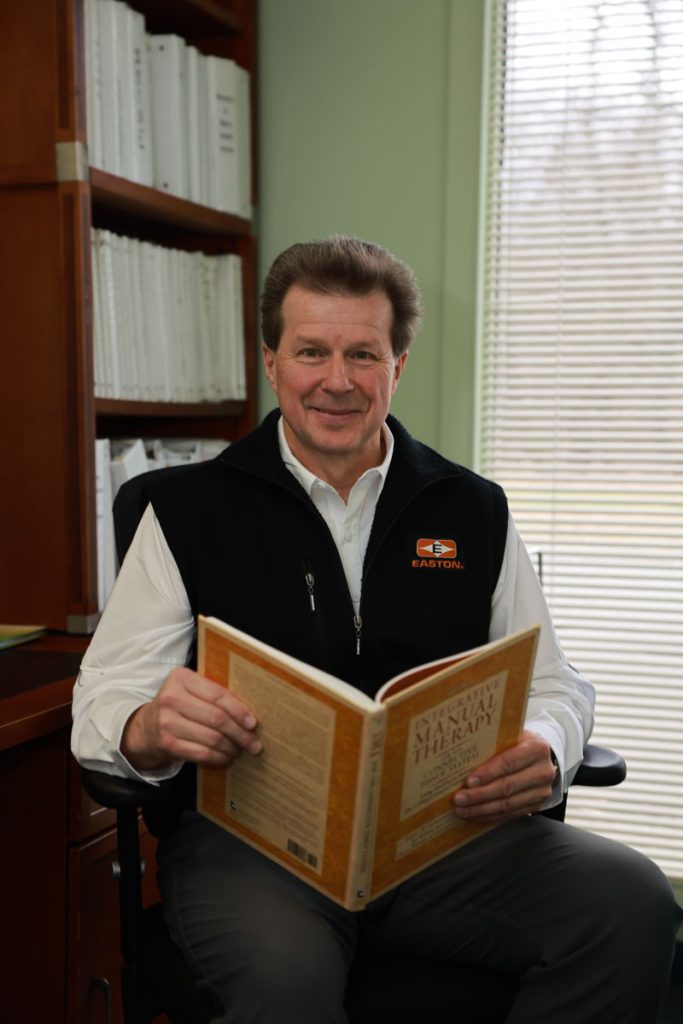“To keep the body in good health is a duty…otherwise we shall not be able to keep the mind strong and clear.” – Buddha
Not every medical professional wears a white coat. There are benefits to the white coat, certainly, but they are far from the full story when it comes to medical care. There are many practitioners out there whose offerings aren’t the mainstream, some of whom may even work closely with the classic white-coat doctors, yet who rarely get given the chance to share what they do. So this issue we’re going to let them do just that.
Acupuncture
Most of us have heard of acupuncture. You likely might even be able to visualize at least some aspect of the treatment itself. While it’s become more mainstream, the treatment itself is nothing new and has been used and described for centuries. In fact, it is recognized as having been first documented and described in The Yellow Emperor’s Classic of Internal Medicine, a writing dating back to about 100 BCE. And while it has Eastern origins, it eventually made its way to Western cultures.
The goal of acupuncture is to facilitate the body’s ability to heal itself. Nikki Peoples of Satori Acupuncture in Knoxville likens the body to a complex grid of power lines (meridians), and the acupuncturist’s job is to clear blockages in that grid. “The insertion of the needle creates an endorphin release in the body,” Peoples says, “which will create an analgesic effect in our system, and that’s where the healing happens.”
After initial intake at Satori, most sessions involve only five to 10 minutes spent actually having needles inserted by the acupuncturist; the bulk of the session is spent relaxing with the needles left in. Peoples notes that—contrary to what some may fear from the idea of being stuck with needles—the process is so calming that many of her patients fall asleep during this part of the session.
The majority of Peoples’ patients come to her for some form of chronic pain, but she says that acupuncture can have a positive impact on a myriad of different issues, from digestive issues to autoimmune conditions; her first year of practice, she recalls, was primarily focused on fertility treatments.
Every treatment plan is unique, but she recommends one to three treatments a week, which can involve both acupuncture and other natural healing techniques. As for the risks? They’re relatively low. Just make sure you’re seeing someone with the proper qualifications and training in the technique.
Herbal Remedies
For Peoples, herbal supplements complement her acupunctural treatments, but for others, herbalism is a dedicated treatment option in itself – particularly as an alternative to pharmaceuticals. These remedies utilize the power of plants to treat illness or simply maintain health, and like with acupuncture, are meant to catalyze the body’s natural rejuvenative processes.
“Herbal medicine encourages your body to heal itself,” says Fiona Fox, co-owner of Fox Muscle & Joint, “whereas most pharmaceuticals are there to replace something.” Fox has a background primarily in Ayurvedic (Indian) and Chinese traditional medicine, but she notes that there is a long tradition of natural medical practices that hail from the Appalachian Mountains as well.
These herbal supplements come in a variety of forms, from powders and teas to skin creams and tinctures like Fox produces and prescribes to the clients she works with.
There can be many benefits to using natural remedies in place of pharmaceuticals, she explains, from the lack of risk of addiction to avoiding allergic reactions to pharmaceutical chemicals. Though, she adds, you don’t need to take tinctures and supplements every day to get benefits from them; somewhat regular use can yield results.
Risks associated are unique to each individual, like most treatments, and are largely based on their conjunction with traditional medicine. If you are already taking medication, you should consult your primary care doctor before supplementing or replacing it with an herbal supplement. Fox says she never unilaterally suggests one of her patients stop taking a prescribed medication, even if her remedy is meant to provide relief from the same condition.
Lion’s Mane

One increasingly common tincture you might see on shelves or in online stores is Lion’s Mane mushroom (hericium erinaceus). For years, there have been studies suggesting numerous health benefits associated with regular consumption of this particular breed of mushroom (one study cites “antioxidative, antidiabetic, anticancer, anti-inflammatory, antimicrobial, antihyperglycemic, and hypolipidemic effects”). And now alternative health practitioners and everyday people alike have caught on to the practice.
“Mushrooms have betaglucans, which come in a wide variety of configurations and branching patterns and can lead to a wide range of effects in our body,” says Josiah Patterson, a Powell-based mushroom farmer and producer of tinctures. “Lion’s Mane has not only some particularly unique betaglucans in it, but it also has unique smaller weight molecule compounds.”
These compounds, Josiah says, are what gives the mushroom its unique benefits, which range from helping regulate digestion and blood pressure to even, it is suggested, combatting Alzheimer’s and other regressive memory disorders.
It’s not specifically tinctures you need, either, Josiah notes. Tinctures provide a concentrated dosage, but the important thing is just to make mushrooms like Lion’s Mane part of your lifestyle. In addition to his tinctures, he regularly cooks mushrooms as part of meals; he even makes mushroom teas! All of this, done regularly, can greatly help regulate your body.
Electrotherapy
On another end of the alternative therapy spectrum is electrical stimulation, or electrotherapy. Think TENS and EMS, the most common forms. These therapies utilize electrical pulses to help areas of the body in pain. In TENS, or transcutaneous electrical nerve stimulation, adhesive electrode pads deliver low-voltage electrical pulses directly to an impacted area. In EMS, electronic muscle stimulation, the electrodes cause muscle contractions to re-educate muscles. Both offer temporary relief from a variety of pains.
A newer electrotherapy—as in, it’s been around since the 80s—that we’ve recently learned about is H-Wave, which claims to be able to provide longer-lasting relief from pain and assist in the healing process. In this form electrodes are attached to an area of the body in pain and the user has an option to administer either low-frequency waveforms or high-frequency ones.
“H-Wave creates a local anesthetic,” says Matt Rose of Electronic Waveform Lab, Inc., the company that produces the device. “It’s different from other devices out there because it acts intrinsically upon the nerve cells in the area that you’re being treated in.”
H-Wave claims a lot of success in reducing the amount of pain medication its patients take, as well as increasing their ability to perform everyday activities. Rose says that the best results come from patients undergoing two treatments daily. Clinical studies suggest that anywhere from half to three-quarters of patients working with H-Wave and similar electrotherapies experience a noticeable reduction in pain and increased functionality in treated areas, though how long these effects last vary by patient and device.
At the moment, electrotherapy is available both as prescription and over-the-counter options, and either version is meant to be applied at home without direct doctor supervision. In general, electrotherapy is seen as a fairly low-risk alternative treatment option, though, as always, it is important to consult a physician before beginning the treatment.

Integrative Manual Therapy
Integrative Manual Therapy is a holistic therapeutic technique that combines common physical therapy techniques with specific protocols (as practitioners call them) to reduce inflammation in the fascia, the thin fibrous tissue that basically holds your insides in place. Practitioners locate areas of inflammation and other infirmity and relieve the immediate source of it, often through connecting seemingly disconnected parts of the body, as well as helping develop lifestyle strategies to reduce and prevent its return.
Jerzy Tworek, a local practitioner, describes his approach as “mapping.” Different areas of the body can affect each other, he explains, and if he can determine which area is dominant or controlling of others, he can isolate the root source of pain or discomfort that others might not be able to see. “I use my hands, basically, to touch different locations and see which one’s affecting the other,” Tworek says. One patient compared the sensation to a dentist working on your mouth and their touch making your ear itch.
Many of Jerzy’s patients come to him with pain (both chronic and post-operative), and his goal is to guide them to a point where they can regain the level of activity that pain can make difficult. Jerzy recalls a patient who, after a single session and three days on a new diet, reduced her severe back pain remarkably, a “70 percent improvement in the inflammation.”
Complementary Medicine
Whether it’s integrative manual therapy, herbal medicine, electrotherapy, or the centuries-old practice of acupuncture, alternative medicine offers a different approach to wellness, and is one that is on the rise. Facilitating the body’s ability to heal itself, each method we’ve explored, along with others, offer patients opportunities to over-come whatever blockages exist inside the body that are causing dysfunction in the journey to healing.
If one of these treatment options has caught your eye, there are plenty of ways to learn more about it before you dive in. Talk with your primary care physician. Reach out to the many local practitioners offering the services and schedule a consultation. Couple your anecdotal research with data-driven research on each, which is so much easier to access these days. The most important thing is that, for whatever treatment you decide on, you walk in with knowledge, an open mind, and a commitment to overall wellness.
